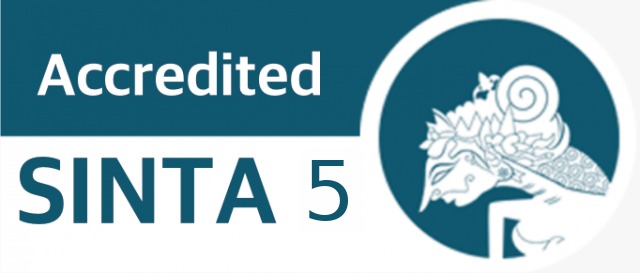Analisis Perangkat Pembelajaran Ilmu Pengetahuan Sosial di SMP Kabupaten Jombang
DOI:
https://doi.org/10.46838/jbic.v5i2.675Keywords:
Learning Tools, Learning Implementation Plan, Social StudiesAbstract
This study aims to determine the content analysis of the components of social studies learning devices used by teachers, the results of social studies learning devices based on the standards set in Jombang Regency. The design of this study uses quantitative descriptive content analysis consisting of 5 stages. Data collection techniques with questionnaires and documentation studies of social studies teachers in Jombang Regency. This study is based on Berelson's (1952) content analysis theory, content analysis as a research technique that studies and analyzes systematically, objectively and quantitatively the messages that appear. Researchers do not find new theories, but only implement the theory to achieve results that are in accordance with the formulation of the problem. The results of this study indicate that teachers have understood the steps of designing lesson plans along with the indicators that must be included, where this was obtained from the results of the analysis of lesson plans conducted by researchers using an item scale based on Ministerial Regulation Number 22 of 2016, the item scale based on the Ministerial Regulation can also be used as a guideline for analysis in researchers in the future, the results of the analysis of lesson plans based on the guidelines obtained the category "Very Complete" with the acquisition of class VII semester I with a percentage of 88.6%, class VII semester II with a percentage of 93.3%, class VIII semester I with a score of 92.3% and class VIII semester II with a score of 91.9%, the components that are less appropriate are learning objectives, learning media and learning resources, on average have similarities to the previous lesson plans so that they are less appropriate if applied to different materials, the tools obtained from the MGMP forum can be used as a guideline by teachers in preparing lesson plans.
References
Abdul Majid. (2014). Strategi Pembelajaran. Bandung. PT Remaja Rosdakarya.
Agus Suprijono. (2011). Model-Model Pembelajaran. Jakarta: Gramedia Pustaka Jaya.
Ahmadi. (2011). Strategi Pembelajaran Sekolah Terpadu. Jakarta. Prestasi Pustaka Publisher.
Al-Tabany, Trianto Ibnu Badar. (2014). Mendesain Model Pembelajaran Inovatif, Progresif dan Kontekstual. Jakarta. Prenadamedia Group.
Alper Goksu, Gonca Gungor Goksu. (2015). A Comparative Analysis of Higher Education Financing in Different Countries. Procedia Economics and Finance. Volume 26, Pages 1152-1158. https://doi.org/10.1016/S2212- 5671(15)00945-4
Amanda Yuli Yanti. (2018). Kemampuan Guru Dalam Merumuskan Tujuan Pembelajaran PPKn Di Sekolah Menengah Kejuruan Negeri 1 Sukoharjo. Prosiding Seminar Nasional PPKn.
Amri, Sofan. (2013). Pengembangan dan Model Pembelajaran Dalam Kurikulum 2013. Jakarta. Prestasi Pustaka.
Amsal Bakhtiar. (2005). Filsafat Ilmu. Jakarta. Rajawali Pers.
Andi Prastowo. (2011). Panduan Kreatif Membuat Bahan Ajar Inovatif. Yogyakarta. Diva Press.
Andi Prastowo. (2015). Panduan Kreatif Membuat Bahan Ajar Inovatif. Yogyakarta. Diva Press.
Arif Sari, Altay Firat, Ali Karaduman. (2016). Quality Assurance Issues in Higher Education Sectors of Developing Countries; Case of Northern Cyprus. Procedia - Social and Behavioral Sciences. Volume 229, Pages 326-334. https://doi.org/10.1016/j.sbspro.2016.07.143
Arikunto, Suharsimi. (2006). Prosedur Penelitian Suatu Pendekatan Praktik, Edisi Revisi VI. Jakarta. PT Rineka Cipta.
Arsyad, A. (2013). Media Pembelajaran. Jakarta. PT. Raja Grafindo Persada.
Barbara Bruns, Isabel Harbaugh Macdonald, Ben Ross Schneider. (2019). The politics of quality reforms and the challenges for SDGs in education. World Development. Volume 118, Pages 27-38. https://doi.org/10.1016/j.worlddev.2019.02.008
Berelson, Bernard. (1952). Content Analysis in Communication Research. New York. Free Press.
Budi Herijanto. (2012). Pengembangan CD Interaktif Pembelajaran IPS Materi Bencana Alam. Journal of Educational Social Studies. Volume 1. No (1).
Cepi Riyana. (2012). Komponen Pembelajaran. Jakarta. Bumi Aksara
Darmadi, Hamid. (2011). Metode Penelitian Pendidikan. Bandung. Alfabeta.
Delceva, J. (2014). Classroom management. International Journal of Cognitive Research in Science Engineering and Education, 2 (1), 51-56.
Erik Van Ommering. (2017). Teaching on The Frontline the Confines of Teachers' Contributions to Conflict Transformation In Lebanon. Teaching and Teacher Education. Volume 67. Pages 104-113. doi.org/10.1016/j.tate.2017.06.002
Eriyanto. (2011). Analisis Isi Pengantar Metodologi untuk Penelitian Ilmu Komunikasi dan Ilmu-ilmu Sosial Lainnya. Jakarta. Kencana Prenada Media Group.
Favorita Kurwadaria, Sumarwati, Nugraheni Eko Wardani. (2019). Model Pelatihan Penyusunan Perangkat Pembelajaran Untuk Meningkatkan Kompetensi Guru Bahasa Jawa SMP Di Kabupaten Karanganyar. Jurnal Varia Pendidikan. Vol. 31, No. 1. 8-16.
H. E. Mulyasa. (2014). Pengembangan dan Implementasi Kurikulum 2013. Bandung. PT Remaja Rosdakarya.
H. M. Jufri Dolong. (2016). Sudut Pandang Perencanaan Dalam Pengembangan Pembelajaran. Volume. V. Nomor. 1
Hamalik, O. (2003). Proses Belajar Mengajar. Bandung. Bumi Aksara.
Hamalik, O. (2010). Kurikulum dan Pembelajaran. Jakarta: PT. Bumi Aksara.
Hamzah B. Uno. (2008). Perencanaan Pembelajaran. Jakarta. PT Bumi Aksara.
Heinich, Robert, Michael Molenda, James D. Russel, (1982). Instructional Media and the New Technology of Instruction. New York. Jonh Wily and Sons.
Kosasih, E. (2014). Strategi Belajar dan Pembelajaran Implementasi Kurikulum 2013. Bandung. Yrama Widya.
Published
How to Cite
Issue
Section
Copyright (c) 2024 Ajeng Eka Prastuti

This work is licensed under a Creative Commons Attribution-ShareAlike 4.0 International License.













